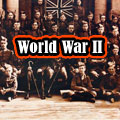"A Name if Necessary, But Not Necessarily a Name": Why There was No HMCS Edmonton
Bruce Ibsen
Reprinted with permission of the author and publisher of For King and Country: Alberta in the Second World War Upon his return, Mayor Fry wrote to MacKinnon not only to thank him for going to the launch ceremony but to explain that Edmonton had "always regretted that no ship could have been named after our own City but Council felt that any other name than Edmonton would have no local significance and could not be a source of any special pride to our City."18
Upon his return, Mayor Fry wrote to MacKinnon not only to thank him for going to the launch ceremony but to explain that Edmonton had "always regretted that no ship could have been named after our own City but Council felt that any other name than Edmonton would have no local significance and could not be a source of any special pride to our City."18
In replying to Mayor Fry, Senator MacKinnon mentioned Mayor Kirby's public expression of gratitude toward Edmonton which had been made during the event. Also rather interestingly he closed by saying that he was making further Inquiries as to the possibility of a government ship being named after Edmonton. Was this over or not?
After the dust apparently had settled on the nanling issue, Angus L. MacDonald wrote to City Council on 13 December 1943, requesting that Edmonton adopt the HMCS Stettler. He stated that "[many] communities which have had ships named after them have undertaken to supply the crew of the ship comforts which are not supplied by the Department...."19 He closed by writing that "I would be glad if you would let me know if your community or some organization in the community would consider adopting the Frigate HMCS 'Stettler'."20
Even though it was not named 'Edmonton', Ottawa still considered the Stettler as Edmonton's ship. John Fry's reaction was positive and quick; he sought out an agency that was willing to carry out this work. This agency turned out to be the Edmonton Civic Opera Society, and with organizations in Stettler helping, the relative comforts of home were soon reaching sailors through their combined efforts.
The final page in this interesting story began on 15 March 1944, when the City Commissioner wrote Pennington with a familiar request.
You will remember that we had some correspondence last year in the matter of naming a corvette after the City of Edmonton, but were unable to arrive at a name that was satisfactory to your department. It has been recently suggested that such a boat might be named "Edmontonia," and we would like to hear from you whether this would be in order or not. 21
One can only imagine Pennington's thoughts when he read this letter. His eyes must have rolled like the deck of the Stettler in the North Atlantic in November. He had his Secretary draft a reply reminding the City of their recommendation that the ship be named the "Stettler."
The name "Stettler" was subsequently approved and allotted to a frigate which is due to be commissioned shortly and of which your Council has been advised in recent correspondence. Moreover, as names have now been approved for all ships presently building under our programme, it is regretted that no provision can be contemplated for the use of the name "Edmontonia." 22
Thus concluded the Battle of the Atlantic, Edmonton-style.
As for the Stettler, she received her commission on 7 May 1944 at Montreal. Her first commander, Lieutenant Commander D.G. King RCNVR, remained at the helm until the end of hostilities. She undertook her first convoy duty on 7 March 1945, and patrolled the waters around the United Kingdom until the end of hostilities. She has the distinction of being the last Canadian warship to leave Londonderry at the end of the war and continued to serve as an active ship until 1966.
The fate of the "SS Fort Edmonton" is unclear. It does appear as though Wartime Merchant Shipping were constructing a cargo ship to be named the "Fort Edmonton," but any further mention of her, like an invitation to an official launching, does not appear in Edmonton Council minutes. In 1976, Canadian Pacific Shipping launched a "Fort Edmonton," but according to the Canadian Pacific archives there is no record of an earlier Fort Edmonton in their fleet.
Throughout this episode it appeared that Admiralty had it in for Edmonton, but the city was not alone. During the war there were a total of 37 municipalities whose names could not be applied to naval vessels. Two examples among those were Victoria's ship named "Beacon Hill" because there already was a HMS Victorious, and Portage La Prairie's vessel, which because of the length of the name was known as HMCS Portage.
Students of history sometimes recognize a cyclical nature to our past. This certainly appears to be evident in the naming of ships for Canada's navy. Recently Ottawa announced the names for twelve new Canadian frigates. All major centres in the country were honoured, with one notable exception; the country's fifth largest metropolitan area, Edmonton, was once again not included.
Notes
18. Ibid.
19. Ibid.
20. Ibid.
21. Ibid.
22. Ibid.








